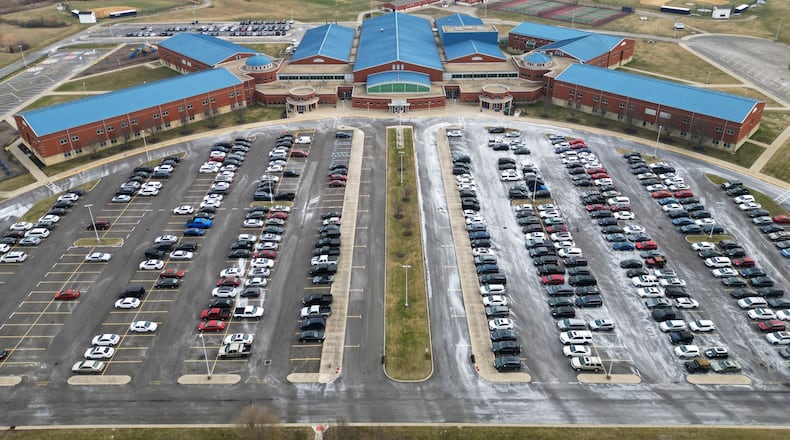>> After population doubles in 2 decades, Monroe OKs plan for more new houses
Monroe’s main campus, which houses grades 2-12, was designed to handle about 1,800 students but now houses more than 2,300 with higher enrollment predicted in coming years.
In response, Monroe school officials told the Journal-News residents will see a 3.49-mill tax bond issue on the November ballot to build a new, separate high school, but the proposed tax hike comes with a delayed-timing detail they hope voters will appreciate.
The state — through Monroe’s years-long wait to partner with the Ohio Facilities Construction Commission (OFCC) — would provide $25.36 million of new high school’s $62.10 million projected price tag.
The district’s moves come in wake of a recent Monroe school board meeting that saw members vote unanimously to file the tax bond issue for inclusion on the city’s November ballot.
The proposed local tax bond would supply the other $36.74 million to cover the new, 9-12 high school planned for the current Yankee Road Campus.
But the new 3.49-mill property tax increase would not kick in until 2029.
That’s the same year, said school officials, a current 3.50-mill tax bond for the existing 2-12 school complex will be paid off.
The bottom line for residents, should they vote “yes” in November, said Monroe Superintendent Robert Buskirk, would see the new tax in 2029 replace the current 3.50-mill tax when it ceases that same year, meaning no school property tax increase for residents with a slight tax cut.
“Monroe’s partnership with the OFCC provides our community with a unique opportunity to address the district’s overcapacity issues without increasing the effective rate of taxation for bonds,” Buskirk told the Journal-News.
Main campus enrollment is already at 130% above its designed capacity, he said, and this bond issue for a new building — preliminarily planned, pending OFCC approval, for the southeast corner of the campus now used for athletic practice fields — is a cost-effective solution, he said.
>>Monroe Schools officials eyeing fall ballot for proposed tax hike
“If the community votes to pass the bond issue in November, we will no longer have to ask the question: ‘Where are we going to put them?’ when considering new opportunities for our students,” Buskirk said.
The 3.49-mill tax would cost the owner of a $100,000 home in 2029 $122 annually at a slightly lower rate than the current 3.50 mills now being collected.
The $36.74 million bond would not exceed 36 years of collection should voters approve it.
Monroe’s nearly decade-long wait — which began with the district’s application for OFCC funding in 2015 — can now pay off for both the district and local taxpayers, said Monroe Board of Education President Tim Carpenter.
“Our community and school district have experienced significant growth since Monroe’s main campus was completed nearly 20 years ago and we’ve been waiting almost a decade for an opportunity to receive funding from the state for a new school building,” said Carpenter.
“Careful planning and years of fiscal discipline have put (us) in a position where it is prepared to take the next step, but it is ultimately up to our community to determine whether we move forward,” he said referring to the OFCC’s rules requiring local school taxpayers to first approve a portion of new school construction total costs before providing state funding to a project.
If voters reject the bond issue, school officials said they will be forced to “begin implementing stop-gap measures that could include the addition of modular (portable) classrooms to address capacity and class size issues.”
(EDITOR’S NOTE: This article has been modified to reflect main campus enrollment instead of high school enrollment.)
About the Author
